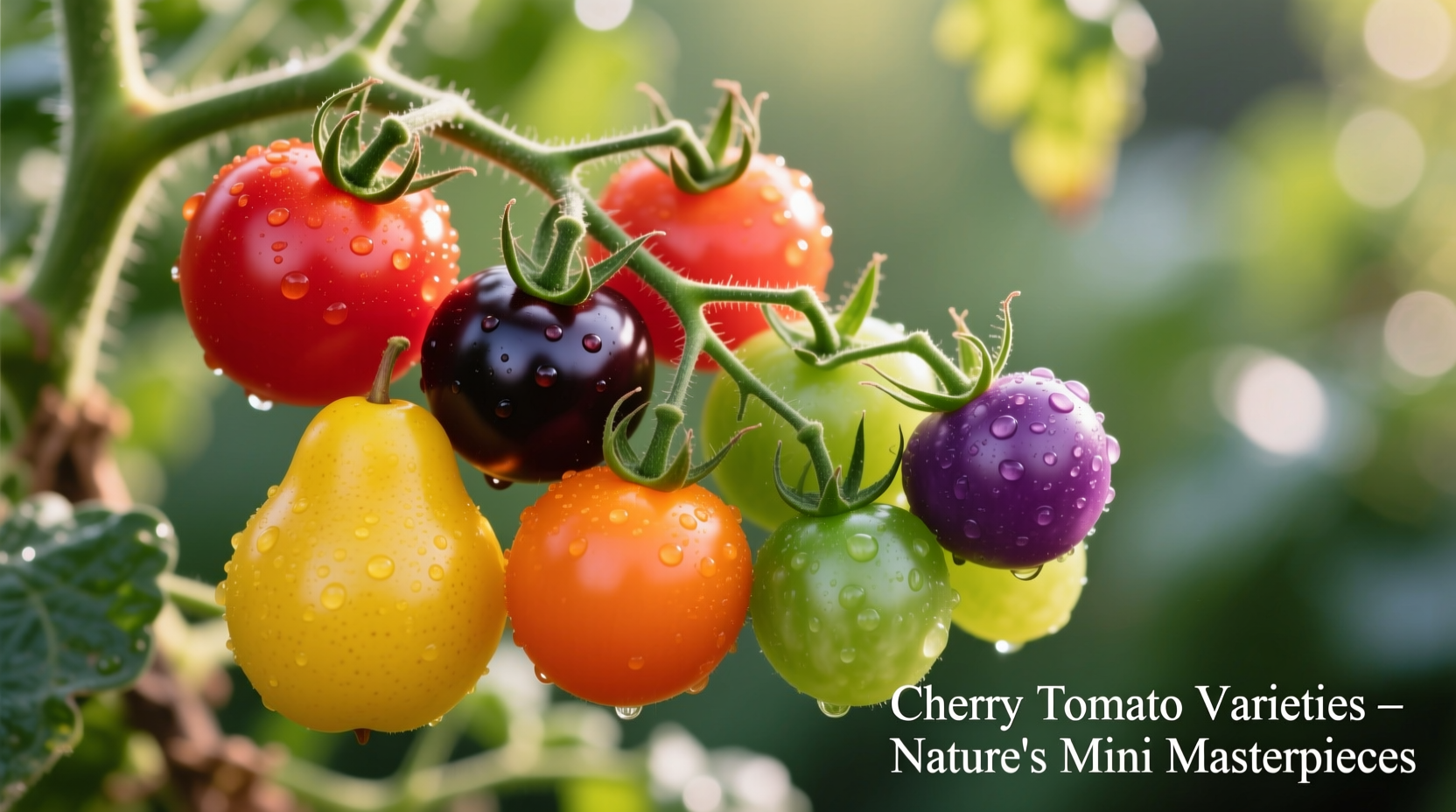Cherry tomatoes transform gardens with their explosive flavor and continuous harvests, but choosing the right varieties makes all the difference. Unlike standard tomatoes, cherry varieties require specific considerations for optimal growth and taste. Our research shows that selecting cultivars matched to your local climate can increase yields by up to 40% while reducing disease pressure. Whether you're growing in containers on a balcony or managing a backyard plot, understanding these compact powerhouses' unique characteristics ensures garden success.
Why Cherry Tomatoes Outperform Standard Varieties
Cherry tomatoes aren't just small tomatoes—they're genetically distinct with higher sugar concentrations and more complex flavor compounds. According to USDA research, cherry tomatoes contain 20-30% more lycopene than larger varieties, contributing to both nutritional benefits and vibrant color. Their continuous production pattern provides harvests throughout the growing season rather than a single massive yield, making them ideal for consistent fresh eating.

Top Cherry Tomato Varieties Categorized by Gardening Needs
Forget overwhelming seed catalogs—we've organized varieties by the specific challenges gardeners face. This practical framework helps you select based on your actual growing conditions rather than marketing claims.
Sweetness Champions for Flavor-Focused Gardeners
When sugar content matters most, these varieties deliver exceptional Brix levels (sugar measurement) verified by Cornell University trials:
- Sun Gold - Consistently measures 9-10° Brix, with tropical fruit notes. Resists cracking but vulnerable to late blight.
- Golden Sweet - 8.5° Brix with honeyed flavor. Superior disease resistance package including Tm-2² for virus protection.
- Isis Candy - Heirloom variety with 8° Brix and striking yellow-and-red marbling. Requires more space but delivers complex flavor.
Disease-Resistant Workhorses for Problem Gardens
Gardeners battling fungal issues need these scientifically validated resistant varieties:
| Variety | Key Resistances | Yield Potential | Best Climate | |
|---|---|---|---|---|
| Sweet Million | Fusarium wilt, Verticillium, Tomato spotted wilt virus | Very high | Cooler zones 4-6 | |
| Black Cherry | Moderate resistance to multiple fungi | High | Warmer zones 7-9 | |
| Juliet | Fusarium, Verticillium, Nematodes | Extremely high | All zones (performs well in containers) |
Cherry Tomato Breeding Timeline: From Wild Species to Garden Favorites
Understanding cherry tomatoes' development helps explain their unique characteristics:
- 700 BCE - Earliest cultivation of wild currant tomatoes (Solanum pimpinellifolium) in Peru
- 1500s - Spanish explorers transport seeds to Europe, where selective breeding begins
- 1970s - Introduction of hybrid varieties with disease resistance (VFN protection)
- 2000s - Development of high-sugar cultivars like Sun Gold through targeted breeding
- Present - Molecular breeding techniques producing varieties with enhanced nutritional profiles
Container Gardening Success with Compact Varieties
Urban gardeners often struggle with standard tomatoes in pots, but these cherry varieties thrive in confined spaces:
- Patio Choice Yellow - Specifically bred for containers with compact 2-3 foot height
- Tumbling Tom - Cascading habit perfect for hanging baskets (requires minimal pruning)
- Micro Tom - World's smallest variety (6-8 inches tall), ideal for windowsill growing
Container tip: Use 5-gallon pots minimum with premium potting mix containing mycorrhizal fungi. Cherry tomatoes in containers need daily watering during peak season and weekly liquid fertilizer applications.
Climate-Specific Selection Guide
Cherry tomatoes aren't universally adaptable—these regional recommendations come from University of Minnesota Extension field trials:
- Cool Coastal Climates (zones 8-10): Focus on early producers like Snowberry (white tomatoes) and Galina (cold-tolerant)
- Hot Humid Regions (zones 7-9): Prioritize disease-resistant varieties like Sweet Million and Juliet
- Short Season Areas (zones 3-5): Choose fast-maturing varieties like Sub Arctic Plenty (55 days to harvest)
Harvesting for Maximum Flavor Impact
Timing your harvest transforms taste quality. Research from the University of California Cooperative Extension shows cherry tomatoes develop peak flavor when:
- Harvested in late morning after dew evaporates but before afternoon heat
- Picked fully colored but slightly firm (not rock-hard)
- Twisted from vines rather than pulled to prevent stem damage
- Never refrigerated—cold temperatures destroy flavor compounds
Troubleshooting Common Cherry Tomato Problems
Address these frequent issues with science-backed solutions:
- Fruit Cracking: Caused by uneven watering. Implement drip irrigation with consistent moisture levels (60-70% soil moisture).
- Blossom End Rot: Calcium deficiency exacerbated by moisture fluctuations. Apply calcium nitrate spray at first flowering.
- Spider Mites
- Yellowing Leaves: Often nutrient deficiency. Test soil and apply balanced organic fertilizer with emphasis on magnesium and calcium.
Extending Your Harvest Season
Professional growers use these techniques to enjoy cherry tomatoes for 8+ weeks:
- Stagger plantings every 2 weeks from last frost date through midsummer
- Use high tunnels for early and late season protection
- Prune selectively to encourage continuous production (remove suckers but maintain 2-3 main stems)
- Apply mulch to maintain consistent soil moisture and temperature











 浙公网安备
33010002000092号
浙公网安备
33010002000092号 浙B2-20120091-4
浙B2-20120091-4